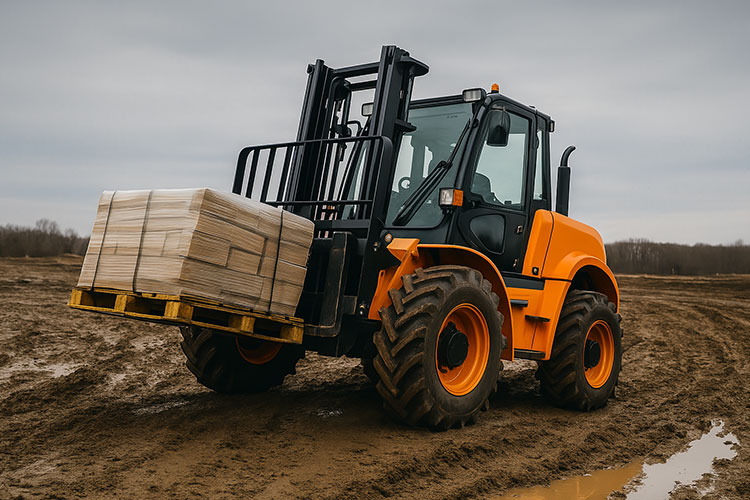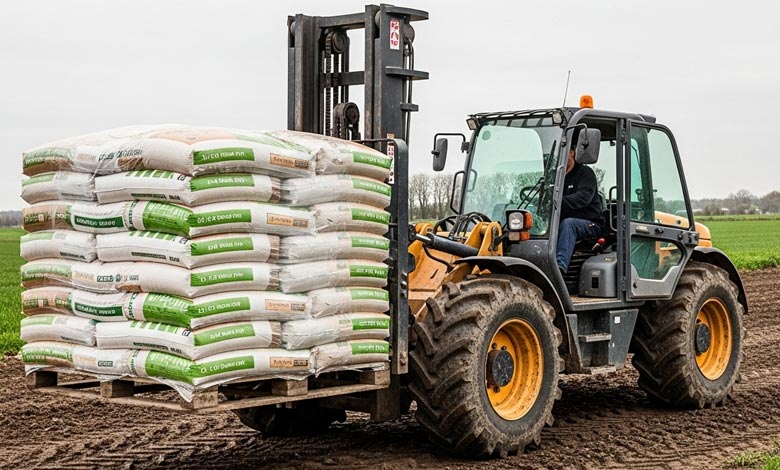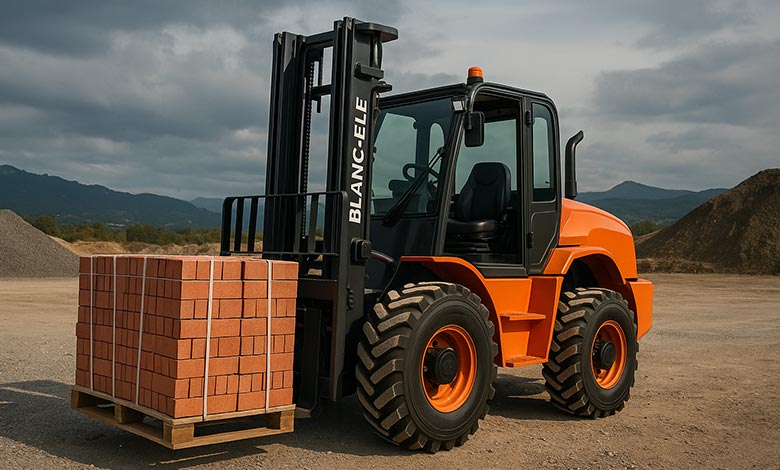Bumpy terrain, unpaved roads, and heavy materials create major challenges on job sites. Standard forklifts fall short. That’s where rough terrain forklifts come in.
From lifting pallets of bricks to hauling feed bags across fields, rough terrain forklifts are built to operate where others can’t. In this article, we explore their top 5 most valuable uses in construction and agriculture.
Let’s dive into the top applications that make rough terrain models essential.
## 1. Construction Sites: Material Transport on Uneven Grounds
## 2. Agriculture: Handling Bulk Feed and Fertilizer
## 3. Farm Infrastructure: Lifting Equipment and Fencing
## 4. Building Materials Yards: Loading Heavy Brick and Stone
## 5. Site Logistics: Moving Generators, Tools & Equipment
🔧 1. Construction Sites: Material Transport on Uneven Grounds
Rough terrain forklifts play a critical role in transporting cement bags, steel beams, bricks, and tools across muddy or gravel surfaces on active job sites. Unlike standard forklifts, their 4WD capability, deep-tread tires, and high ground clearance let them maneuver over bumps, ruts, and debris with ease.
This application is especially valuable in early-phase construction, where paved paths are unavailable.

🌾 2. Agriculture: Handling Bulk Feed and Fertilizer
Agricultural operations often require outdoor forklifts that can travel across soft soil, grass fields, or uneven terrain. Rough terrain forklifts are perfect for moving feed bags, fertilizer sacks, seed pallets, and pesticide drums across wide farm areas.
Their powerful diesel engines and all terrain forklift chassis allow them to operate in areas unreachable by traditional warehouse trucks.

🛠 3. Farm Infrastructure: Lifting Equipment and Fencing
Building or repairing farm infrastructure—like fencing, irrigation systems, or solar panel arrays—often involves heavy and awkward loads that must be transported over open, uneven ground.
4×4 forklifts provide the lift height, load capacity, and rough terrain access needed to move posts, reels, pipes, or toolboxes across long distances.

🧱 4. Building Materials Yards: Loading Heavy Brick and Stone
Brickyards, stone factories, and block yards often have outdoor storage with loose, dusty ground. In these spaces, rough terrain forklifts are used to lift pallets of bricks, slabs, pavers, or ceramic blocks with maximum stability.
Unlike warehouse forklifts, rough terrain models can handle heavier, unevenly distributed loads without tipping or sinking.

⚙️ 5. Site Logistics: Moving Generators, Tools & Equipment
Rough terrain forklifts are not just for materials—they’re also used to move mobile generators, jobsite storage containers, tool pallets, and work platforms. Their flexibility on variable terrain makes them indispensable for site logistics.
With optional attachments like side shifters, clamps, or bucket forks, these machines adapt to a wide range of non-standard handling needs.

From construction sites to farm fields, rough terrain forklifts offer unmatched versatility and mobility. Their 4WD systems, heavy-duty components, and off-road tires make them the top choice for outdoor lifting challenges.
